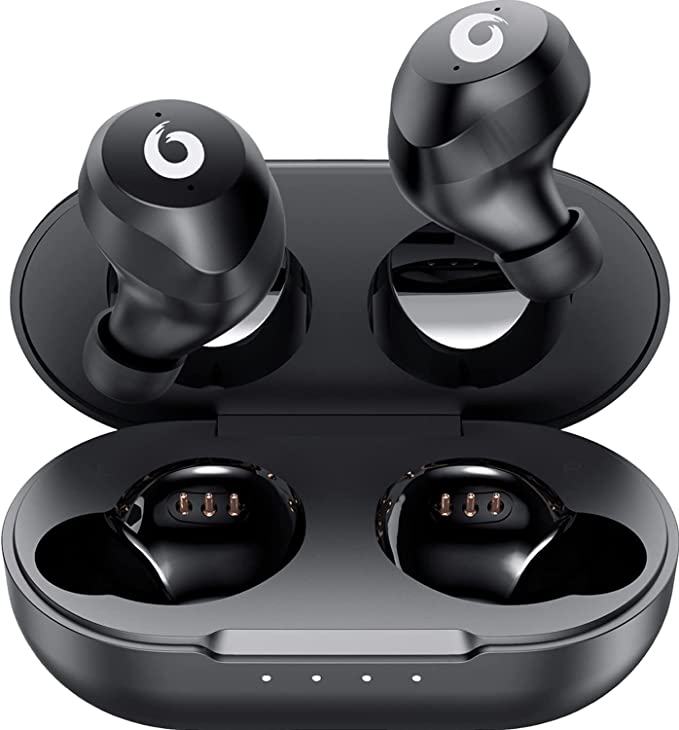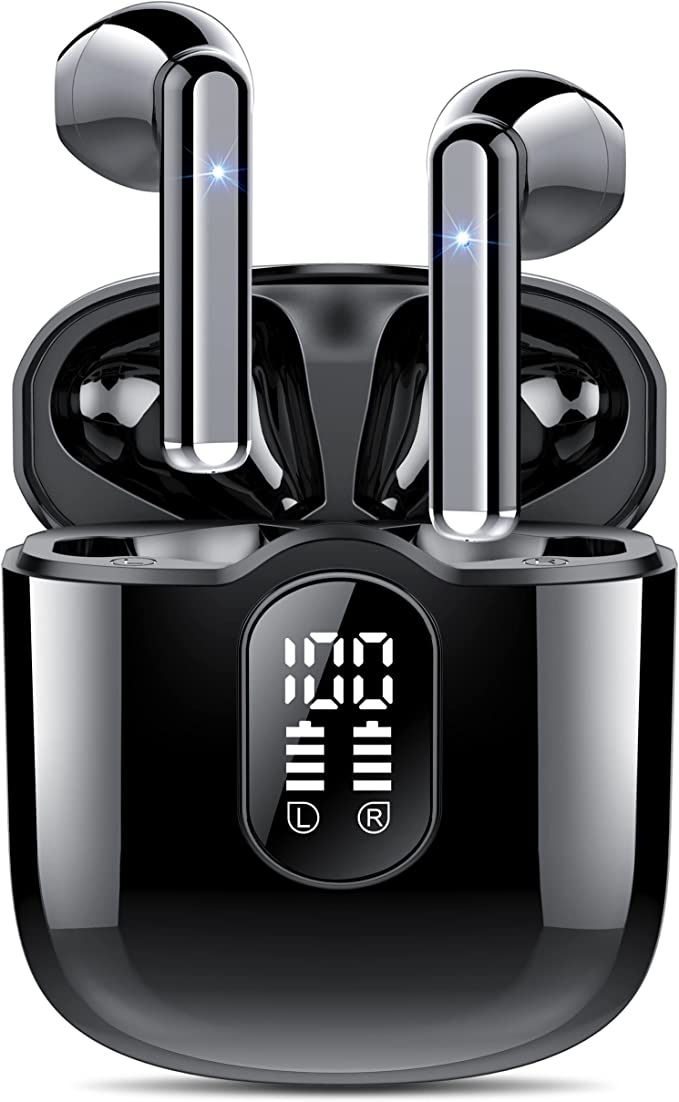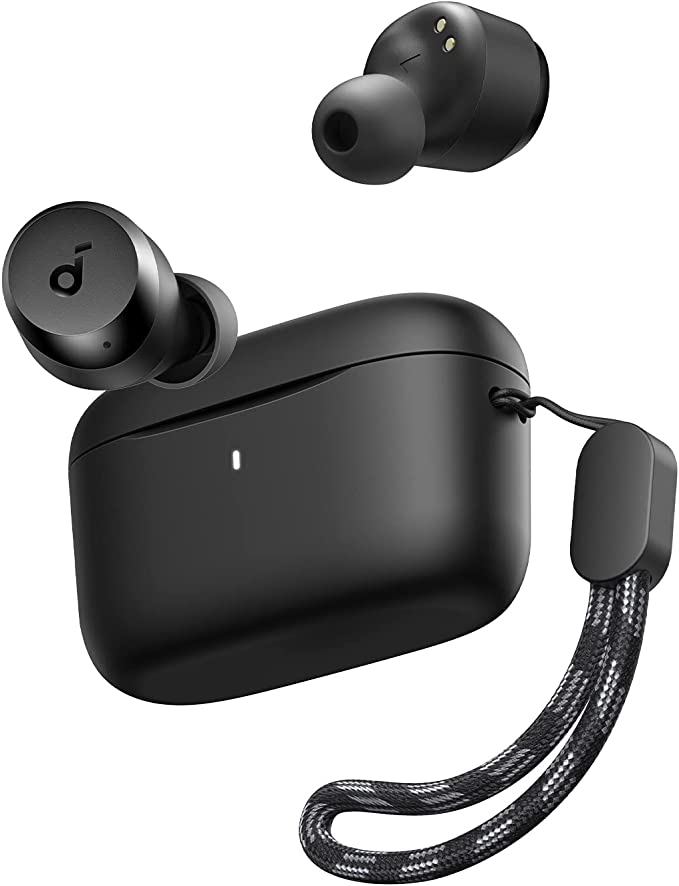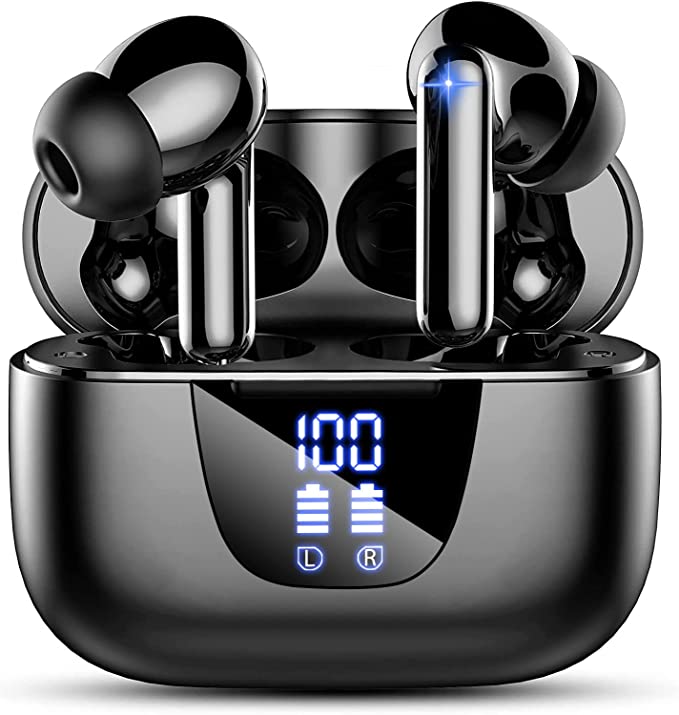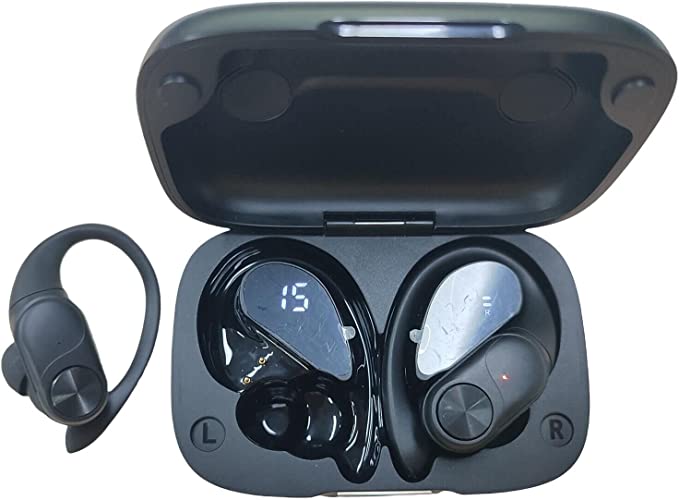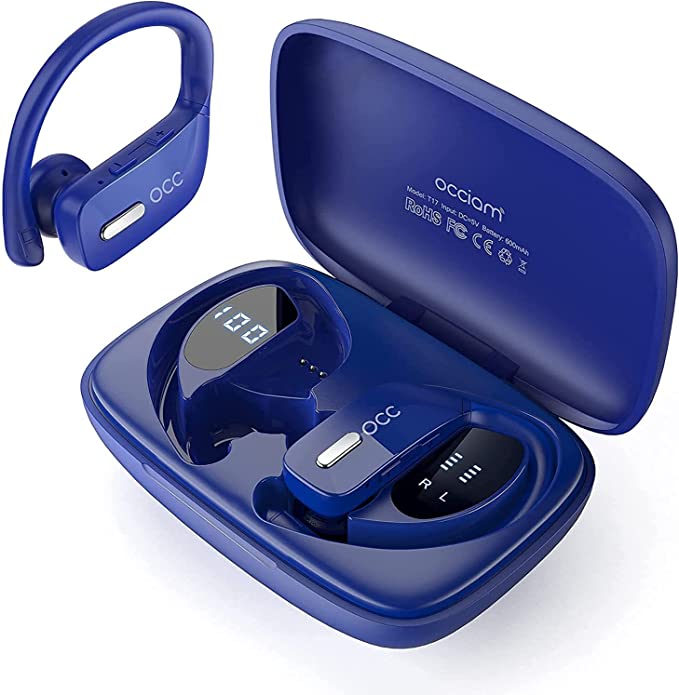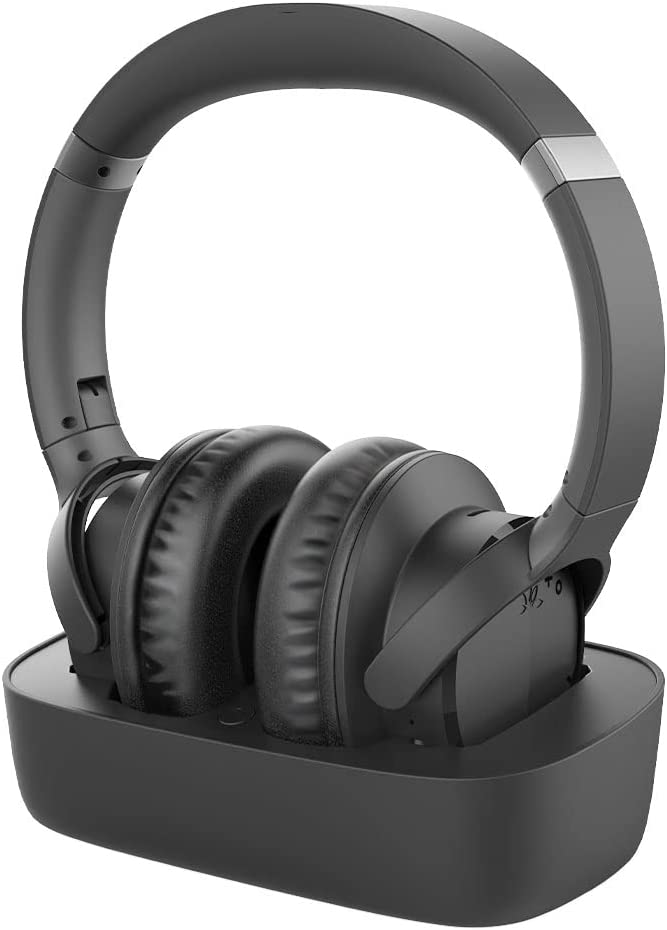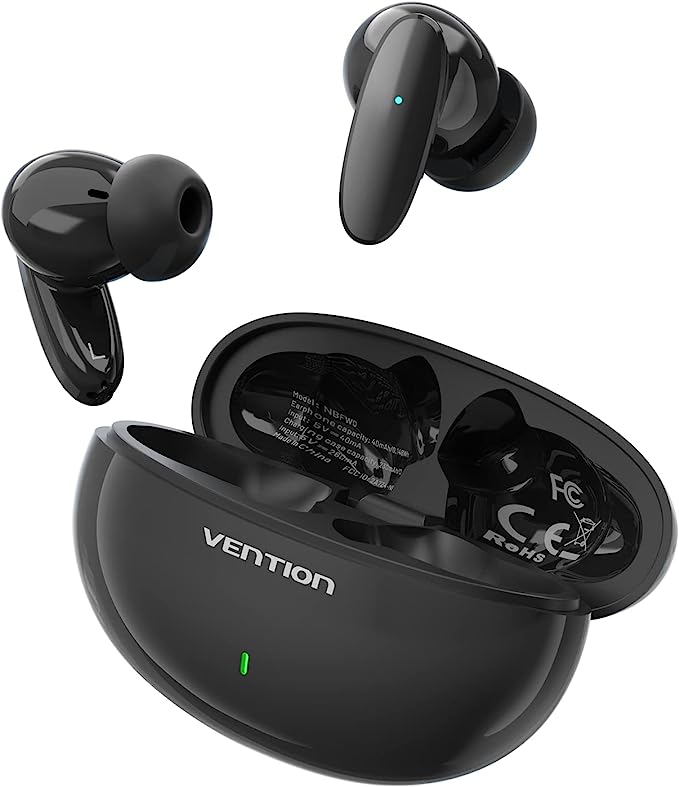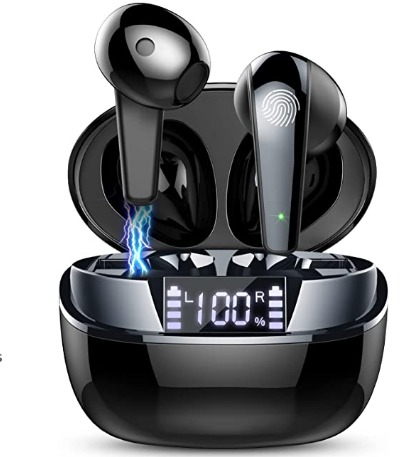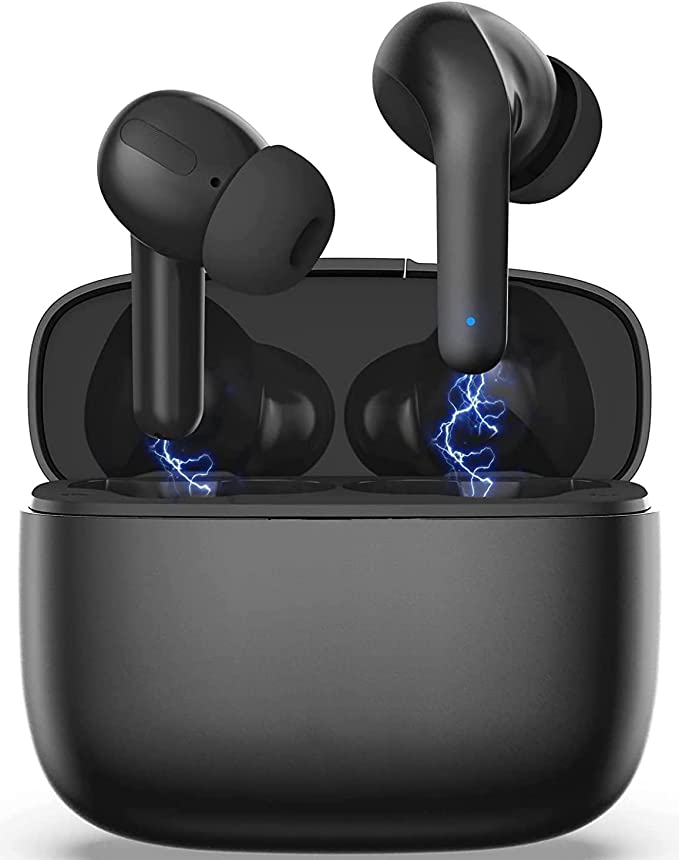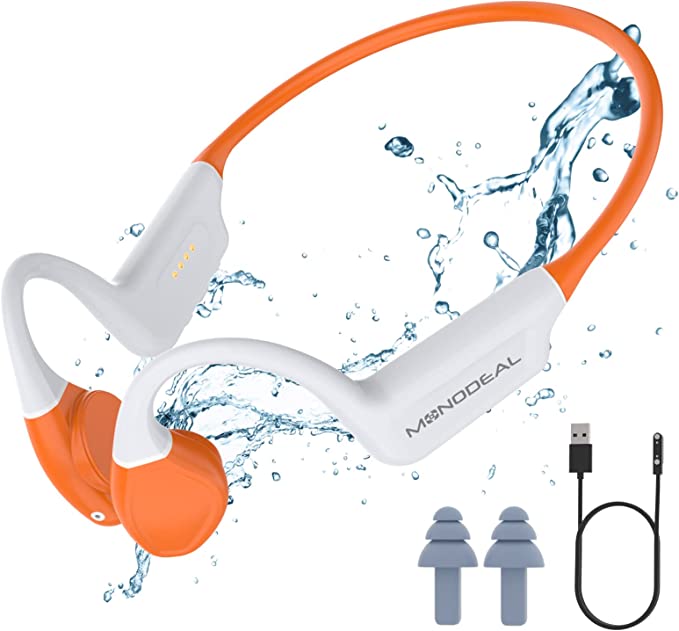XINDAOER Wireless Bluetooth Headphones: Superb Sound with Stable Connectivity Needed
Update on June 23, 2025, 10:41 a.m.
It’s a familiar scene: you, untethered, moving through your day with a personal soundtrack, taking calls on the fly, or diving into a game, all thanks to a pair of unassuming wireless earbuds. These tiny titans of tech have rapidly become almost an extension of ourselves. But have you ever paused to consider the sheer density of sophisticated engineering nestled within those sleek shells? It’s a symphony of miniature components and complex protocols working in harmony. Let’s pull back the curtain and explore the science that powers modern wireless earbuds, using the features claimed by devices like the XINDAOER Wireless Bluetooth Headphones – such as Bluetooth 5.3, an ambitious 40ms low latency, 13mm drivers, and IPX7 waterproofing – as our examples to demystify the magic.

The Wireless Lifeline: Understanding Bluetooth 5.3 and Stable Connections
At the very core of your wireless freedom is Bluetooth. Think of it as your personal, invisible data highway, constantly ferrying audio signals from your phone or computer to your ears. When a product mentions Bluetooth 5.3, it’s referring to one of the more recent iterations of this standard. While the full technical dive is vast, generally, newer Bluetooth versions aim for improvements in a few key areas over their much older predecessors: enhanced connection stability (fewer annoying dropouts), potentially faster data transmission, and, crucially, better power efficiency, which means your earbuds can last longer on a single charge.
You might also see terms like “two-channel transmission.” In essence, this often describes a method where your audio source establishes a more direct and independent link to each earbud simultaneously, rather than one earbud acting as a primary receiver and then relaying the signal to the other. Imagine two dedicated lanes on our data highway, one for each ear; this can significantly bolster the stability of the connection and further reduce the chances of one earbud losing sync with the other. It’s all about making that wireless link as robust and seamless as possible.

In Perfect Sync: Why 40ms Low Latency is Music to Your Eyes (and Ears)
Ever watched a video where someone’s lips move out of sync with their voice? Or felt that frustrating delay in a game between an action and its corresponding sound effect? That’s audio latency – the tiny, sometimes not-so-tiny, delay between when an audio signal is generated and when you actually hear it. For wireless audio, manufacturers are constantly striving to minimize this. When a product like the XINDAOER earbuds claims a 40 millisecond (ms) low latency, it’s a noteworthy ambition. To put that in perspective, human perception of audio-visual lag often becomes noticeable above 75-100ms for many people. Forty milliseconds is aiming for a delay so slight it’s virtually imperceptible.
This near-instantaneous audio is vital for an immersive movie-watching experience and can provide a critical competitive edge in gaming where sound cues are paramount. Achieving such low figures typically involves a finely tuned interplay between the Bluetooth chip itself, the audio codecs (the digital language your devices use to compress and decompress audio), and the transmission protocols. It’s like a perfectly timed relay race, where every handoff is executed flawlessly to ensure the sound reaches your ears almost the instant it’s created.

Crafting Your Personal Concert: Drivers, Sound, and the “HiFi” Quest
The soul of any headphone, the part that actually makes the sound, is its driver. Most earbuds, including those boasting 13mm dynamic drivers like the XINDAOER model, use this common and effective technology. Picture a miniature loudspeaker: a diaphragm (a thin, flexible membrane) is attached to a voice coil, which sits within a magnetic field. When an electrical audio signal passes through the coil, it causes the diaphragm to vibrate rapidly, and these vibrations create the sound waves that travel to your eardrums.
The size of this driver – 13mm in this case – can influence its sonic capabilities. Generally speaking, a larger diaphragm surface area can move more air. This often translates to a potential for more powerful and extended bass frequencies (the “intense bass” mentioned in the product description) and a broader overall sound range, contributing to more dynamic highs.
And what about “HiFi Stereo Sound”? “HiFi,” or high-fidelity, is an aspirational term in audio. It suggests a sound reproduction that is faithful and accurate to the original recording, with good clarity, detail, and a well-defined stereo image (the sense of space and positioning of sounds). While true audiophile-grade HiFi can be a deep and expensive rabbit hole, in the context of accessible earbuds, it signifies an aim to deliver a listening experience that’s clear, engaging, and enjoyable across various types of music. The effectiveness of this, of course, also heavily depends on the quality of the driver, the acoustic design of the earbud housing, and the seal it creates in your ear.

Being Heard: The Science of ENC Microphones for Clearer Calls
In our connected world, earbuds aren’t just for listening; they’re vital communication tools. But taking a call in a noisy environment can be a struggle for the person on the other end. This is where ENC (Environmental Noise Cancellation) for microphones comes into play. Unlike Active Noise Cancellation (ANC) which is designed to quiet your listening environment, ENC for microphones focuses on cleaning up the audio you send out.
Essentially, the microphone system, sometimes using multiple mics and clever algorithms, tries to distinguish your voice from the ambient sounds around you – the cafe chatter, the street traffic, the office hum. It then works to suppress that unwanted background noise, aiming to make your voice stand out more clearly and intelligibly to your caller. The goal, as suggested by claims like reducing “loss of sound quality by 50%,” is to ensure that more of your vocal details are preserved, even when the world around you isn’t quiet. Think of it as a smart spotlight for your voice, keeping you in focus during conversations.

Powering Your World: LED Displays, Marathon Battery, and Speedy Recharges
Few things are more frustrating than your earbuds dying mid-song or mid-call. That’s why battery life and charging convenience are huge. A feature like an LED digital display on the charging case, as seen on the XINDAOER product, is a wonderfully practical touch. Instead of relying on a few blinking dots, you get a precise numerical readout of the case’s remaining charge, and often that of the earbuds themselves. No more battery anxiety or guessing games!
When you see claims of extensive playtime – for example, 6 hours of continuous playback from the earbuds, plus an additional 35 hours from the charging case – it’s a testament to the efficiency of modern Bluetooth chips and the energy density of the Lithium Polymer batteries typically used in these devices. And for those moments when you do need to power up, USB-C fast charging is now the welcome standard. Being able to get a full charge in around 1.5 hours, as claimed, means less downtime and more listening time. The charging case effectively becomes a pocket-sized power bank, always ready to refuel your earbuds.

Ready for Real Life: The IPX7 Waterproofing Shield
Life happens. You might get caught in a downpour on your run, work up a serious sweat at the gym, or accidentally splash your earbuds. This is where an IPX7 waterproof rating becomes your best friend. Let’s decode that: “IP” stands for Ingress Protection. The “X” means it hasn’t been specifically rated for dust protection (though a good seal against water often helps with dust too). The “7” is the crucial part for water; it signifies that the device can withstand being fully submerged in water up to 1 meter deep for about 30 minutes without damage.
This level of protection is often achieved through meticulous sealing of the earbud casing and sometimes with the application of a hydrophobic nano-coating on internal components, which repels water at a microscopic level. For you, an IPX7 rating translates to peace of mind, allowing you to use your earbuds during strenuous activities or in less-than-ideal weather without constantly worrying about water damage. It’s like an invisible, personal wetsuit for your delicate electronics.
The Finishing Touches: Ergonomics and Intuitive Control
All the tech in the world doesn’t mean much if the earbuds are uncomfortable or clunky to use. That’s why ergonomic design is key. Manufacturers often spend considerable time refining the shape, surface finish, and angle of the in-ear portion to achieve a balance between a secure fit and long-wearing comfort. The inclusion of multiple sizes of silicone eartips is also critical, as a proper seal is essential not only for comfort but also for optimal sound quality, especially bass response.
And for seamless interaction, features like “easy pairing” – where the earbuds automatically power on and connect to your last-paired device when you open the charging case – save you time and hassle. Touch controls on the earbuds themselves further enhance this, allowing you to play/pause music, skip tracks, answer calls, or even activate your phone’s voice assistant with simple taps or swipes, all without needing to fish your phone out of your pocket. It’s about making the technology feel intuitive, almost like an extension of yourself.

The Everyday Engineering Marvels in Your Ears
So, the next time you pop in your wireless earbuds, take a moment to appreciate the incredible convergence of technology that makes your seamless audio experience possible. From the intricacies of Bluetooth 5.3 ensuring a stable connection, to the precision of low latency keeping your audio and video in sync, the acoustic engineering striving for rich sound, the clever noise filtering for clear calls, the endurance of modern batteries, and the resilience of waterproofing – it’s a testament to how far consumer electronics have come. Understanding this “unseen symphony” not only demystifies the jargon but also fosters a deeper appreciation for the pocket-sized powerhouses that accompany us through so much of our daily lives. They are, in their own small way, everyday engineering marvels.
